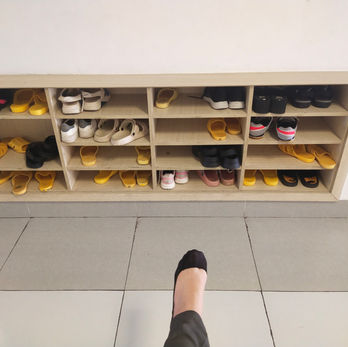
“To acquire knowledge, one must study; but to acquire wisdom, one must observe.”
-Marilyn vos Savant

1st Week: The Observation
I actually didn’t understand what the teacher I observed was saying because the subject was taught in Vietnamese. But I got to comprehend the flow and teaching of the teacher with the help of my Vietnamese buddy. A special mention to Trúc Giang, who helped me everyday during my stay in Vietnam. Thank you so much my dear friend!
Observing the Teacher

I. Teaching Method
This is the technique, strategies, and procedure that the teacher used
The teacher employed a student-centered approach along with developmental teaching procedure. When the music played, signaling that the class would start in five minutes, the teacher mandated the students to fix their desks and put their bags on the shelves located at the two sides of the classroom. The teacher then prepared himself to teach the children. The subject I observed was geography, and the topic was all about directions. The teacher asked several questions while discussing, making the class more engaging.
Teaching Procedure:
01
The teacher gave a recap of the previous lesson through recitations. He let the students vocally answer their ideas and knowledge. It is evident that the students were comfortable with their teacher because they were not hesitant to share their thoughts.
03
The teacher drew '✥', a cross shaped line (vertical and horizontal) on the whiteboard.
He asked questions to test the knowledge of the students. These are some of the questions being asked:
-
How many main directions do we have?
Answer: Four
-
Where is the South? Where is the North? Where is the East? Where is the West?

05
The teacher gave an activity related to the discussion. He required the students to turn their textbook on a specific page. On that page, there is an overview map of a city. It consists of basic institutions such as church, school, park, hospital, market, etc. He then asked the students for directions. For example, “If I am at the park, what direction should I go when I want to go to the hospital?”
The students were very active and most of them were volunteering to recite.
02
The teacher mandated his students to open their textbook and he wrote “Finding your way on the map.” He made the students read outloud the content of their textbook.

04
The teacher furtherly explained the four main directions.


06
Lastly, he showed the value of accommodation by asking the students if they have a question regarding the lesson before he dismissed them.

II. Learning materials, innovation and sources of learning
This were the materials used by the teacher materials to support teaching and learning
The teacher utilizes the available tools in the classroom. He mainly used the adjustable white board during the discussion. He drew the four main directions making the students visualize what was being thought. In addition, he also used the provided textbook as his basis. These learning materials may help in delivering the lesson however, the learning objectives only achieved because of the effort and dedication of the teacher. Indeed, the teacher is the best IM’s in the classroom.
III. Authentic Assessment
This is the unique way of the teacher in evaluating the knowledge of the students
The teacher frequently asked the students questions to evaluate their prior knowledge, and progress of learning. One authentic assessment strategy of the teacher was to give a consequence action to the student who cannot answer the question.The teacher told the class beforehand that the student who cannot answer the question (based on the recap of the previous lesson), will greet one foreign exchange student using the English language.
There was a student who was not able to answer and then, the teacher commanded her to pick one exchange student teacher observer to greet. I was shocked because out of all the observers at the back, the student walked towards me and chose me to give her greetings. She told her name and then greeted me by saying “hello teacher.”
This strategy of the teacher is effective because it captures not only the attention of the students but also us, the observers. I am glad that the teacher acknowledged our presence.











